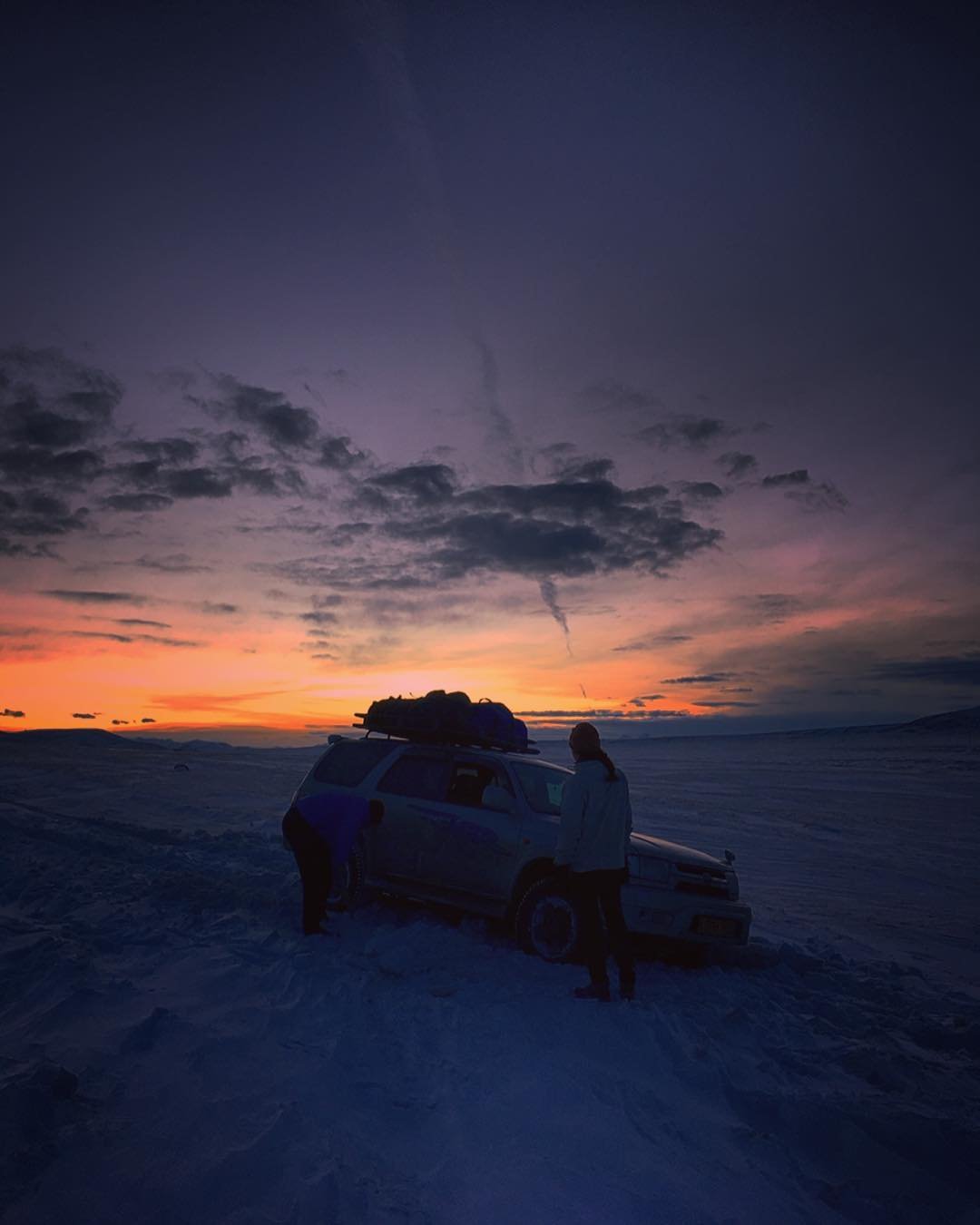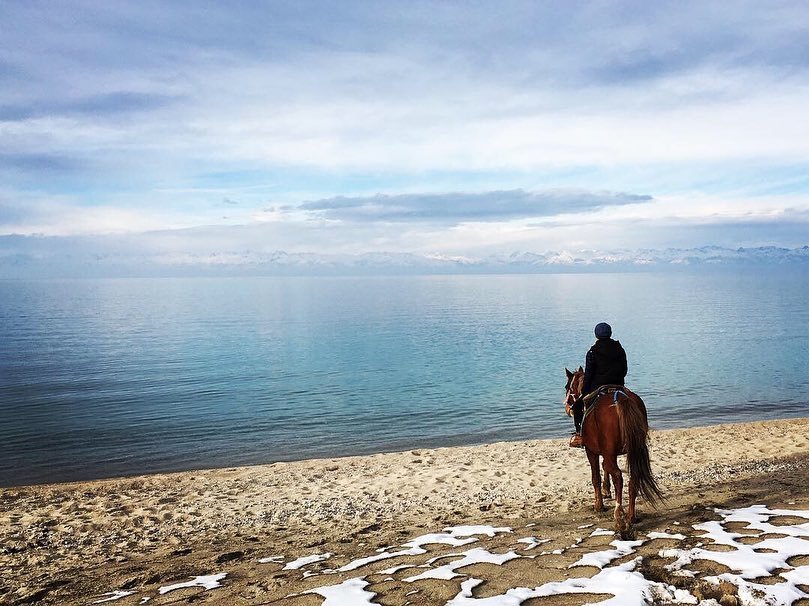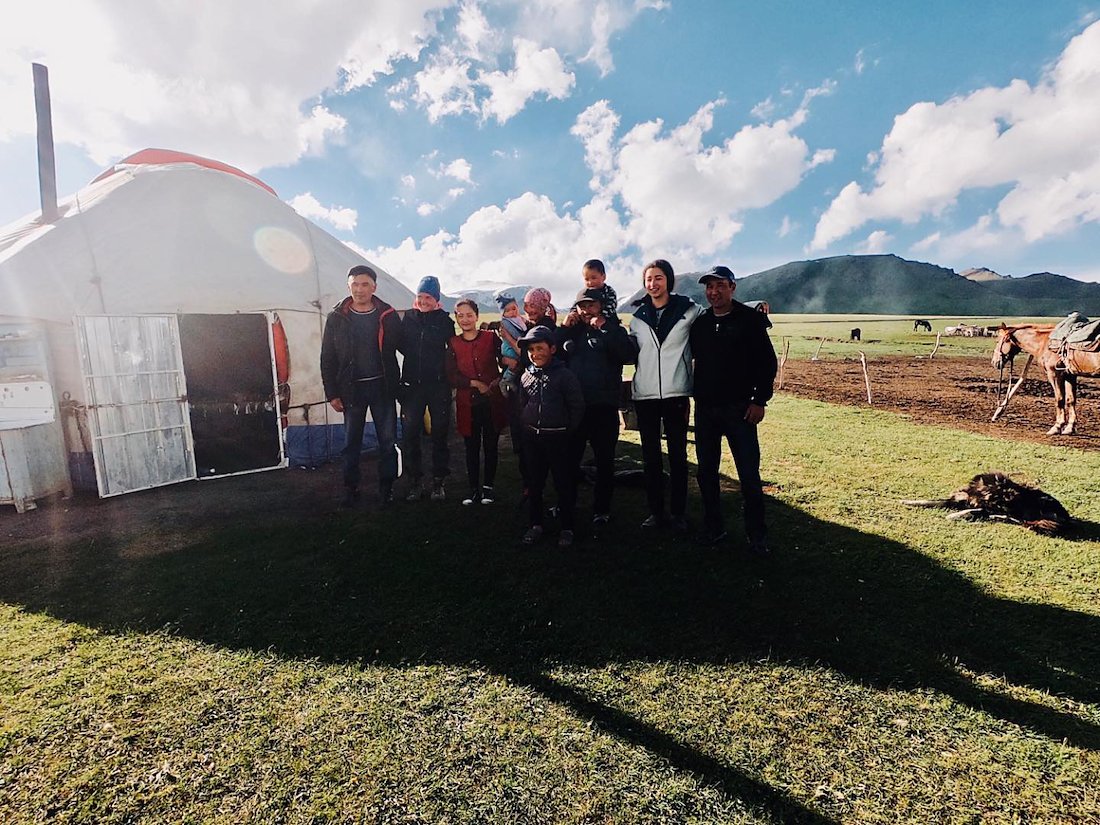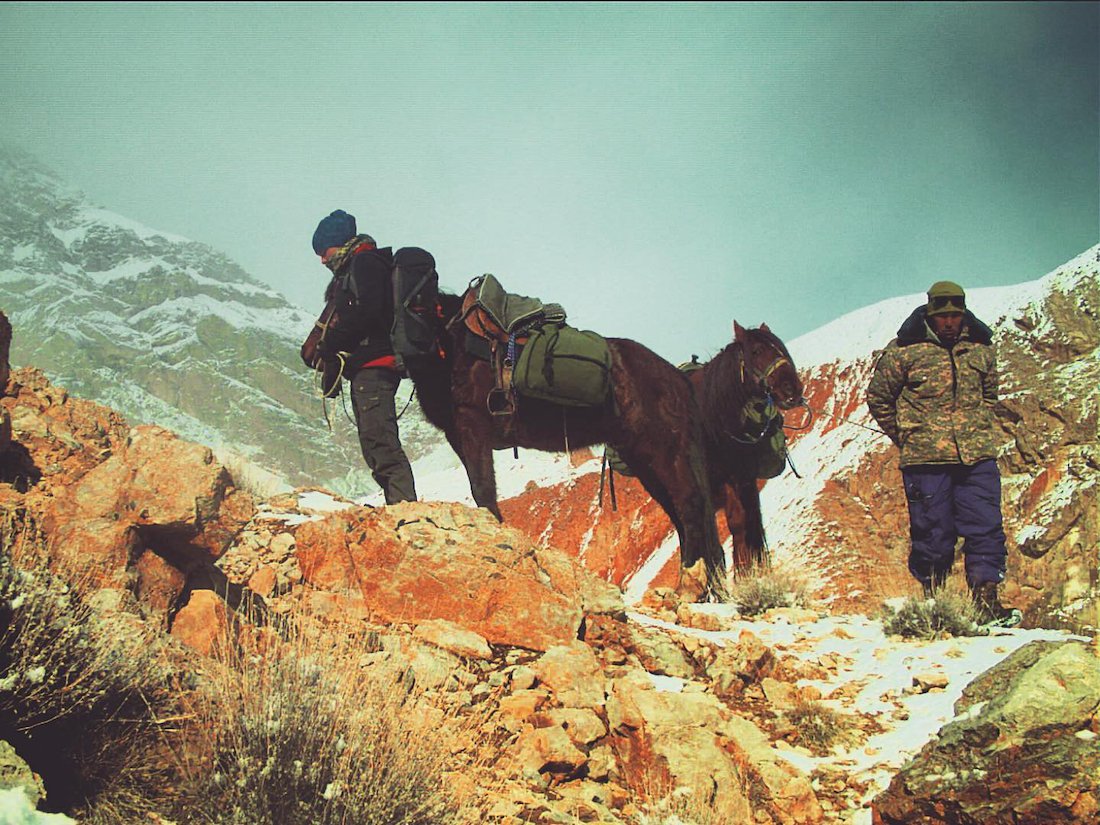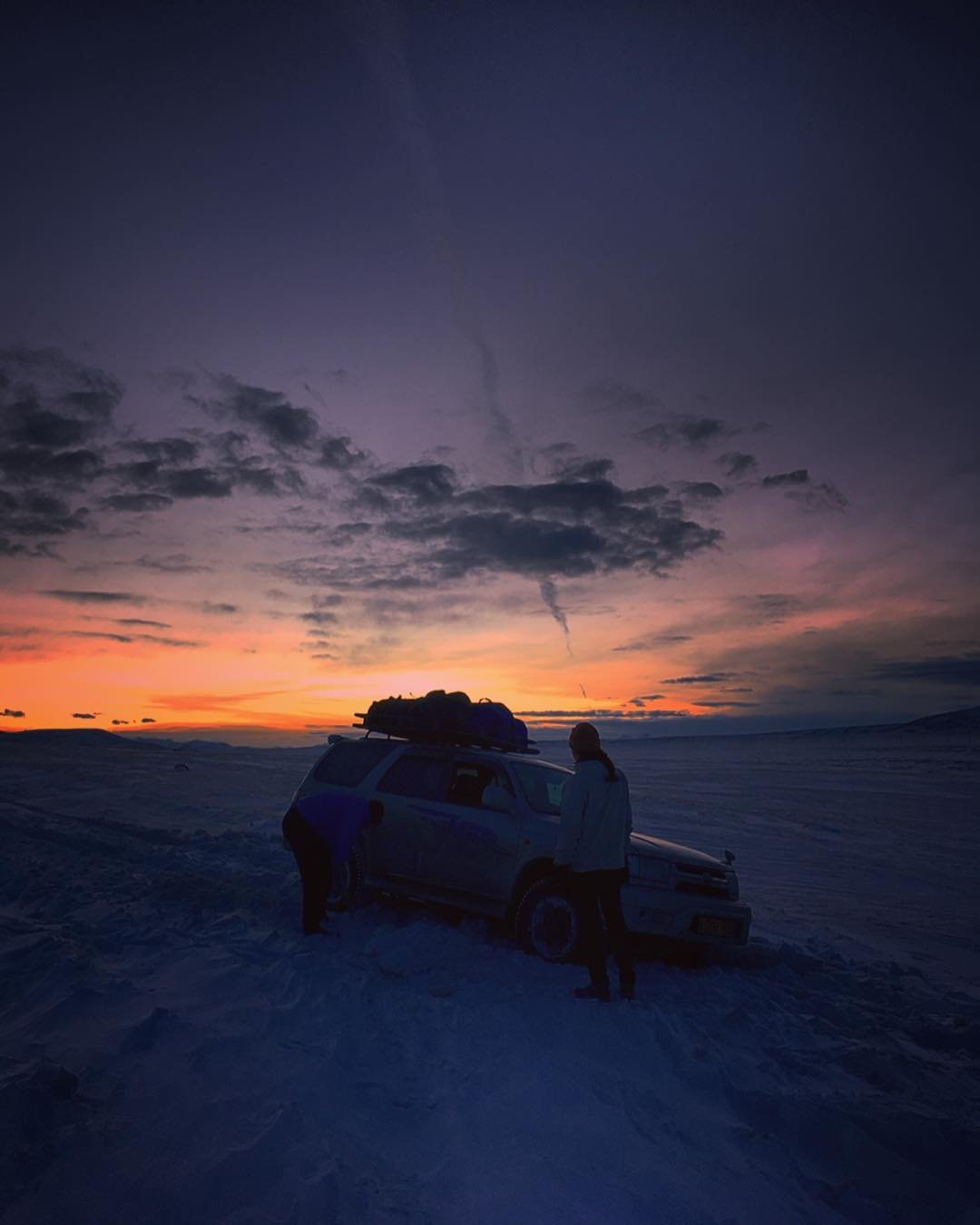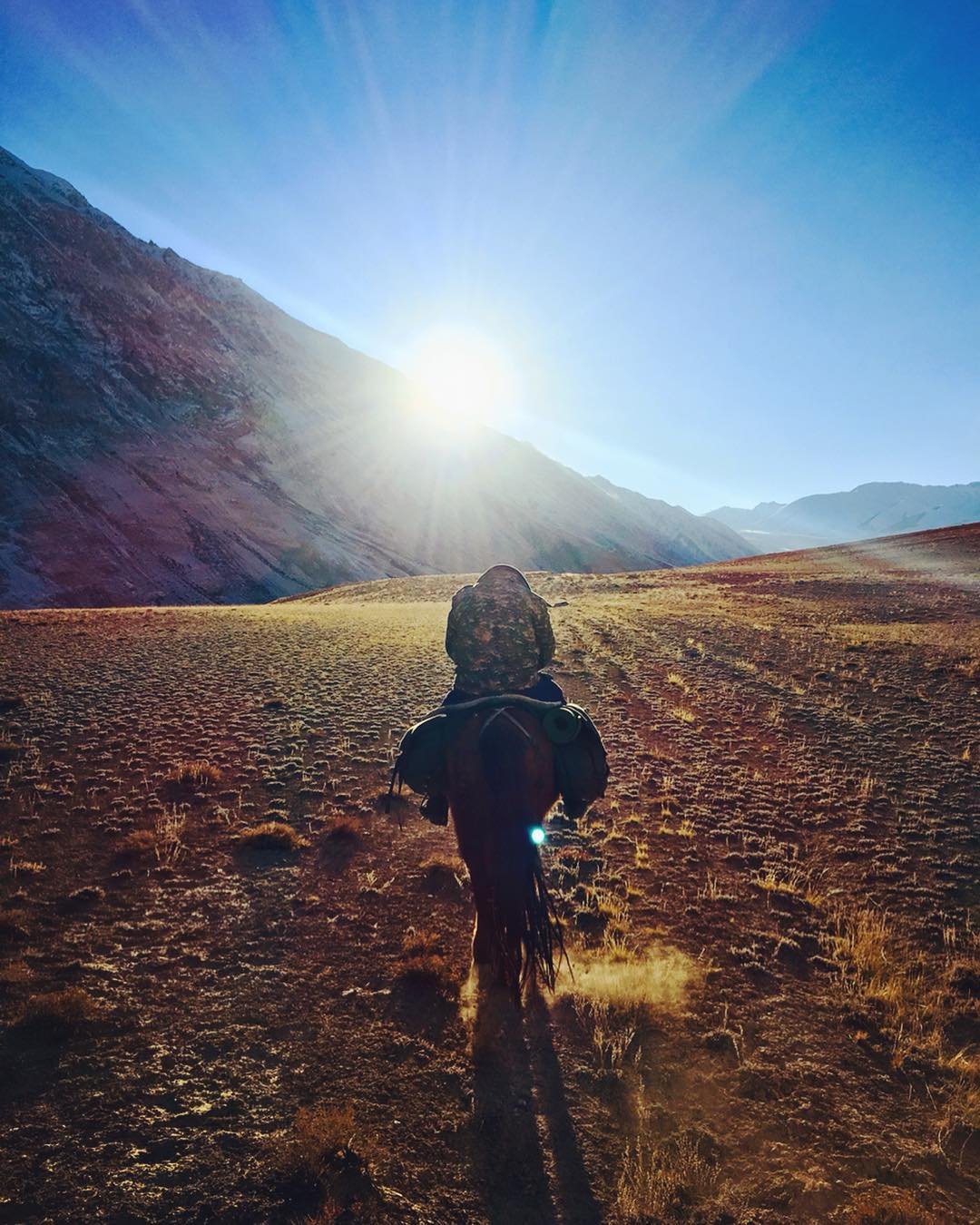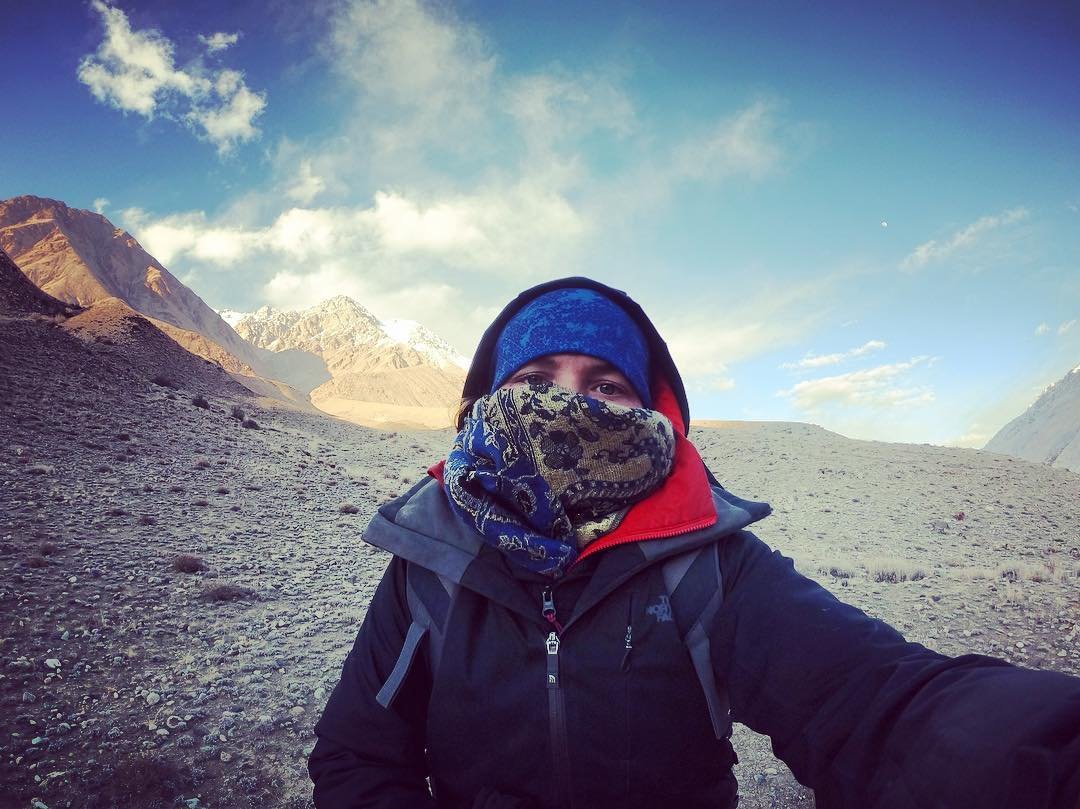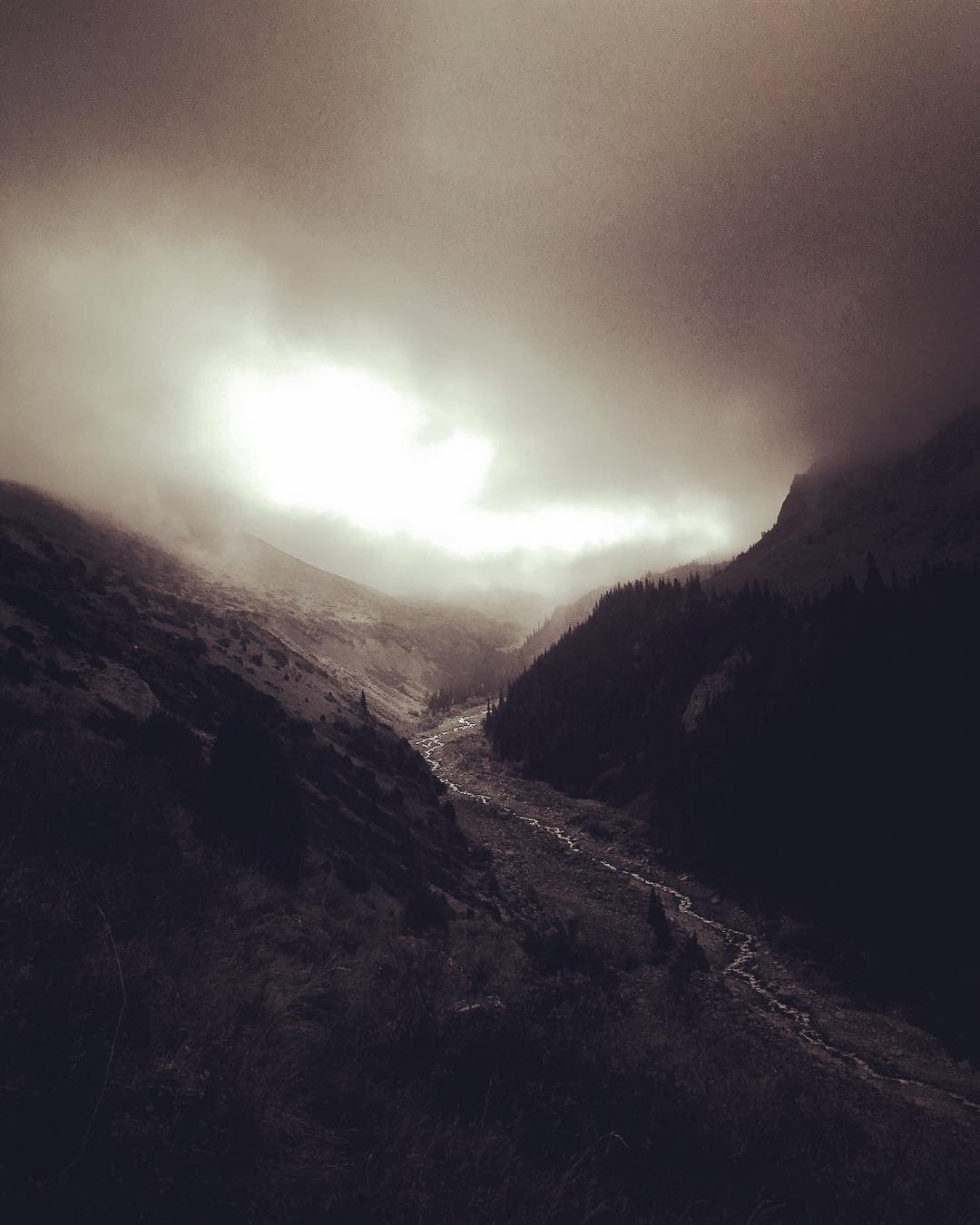Cold – Communities – Wildlife – Conservation
These are the four words that have been in my mind since I realized there was more than being a veterinarian if I wanted to help protect the biodiversity around us. Growing up in very rainy and flat Normandy in France, I have always dreamt and longed for the dry, cold and mountainous landscapes of the world. I grew up travelling to Canada and reading Jack London’s books. I was 9 when my mom and I watched a documentary about a young female scientist staying in a remote rustic cabin in the middle of Russia to study wolves. While my mother whispered, “Oh my goodness, how terrifying must that be for the parents?” I shouted, “This is precisely what I want to do when I grow up!”—the next 20 years ended up being terrifying for my parents.
If you wish to directly have access to my research CV, please click on the photo above. For a more detailed version of what I did, where and when, please see below. I’ll keep it brief but not as brief as the CV!
Publications
The PhD Thesis is currently in the process of being published. Each chapter is also in preparation or already submitted to peer-reviewed journals. Published papers will be accessible above.
France
The premises
Born and raised in Paris, my sister and I moved to Normandy when I was 9. My mom, a teacher, and my dad, a movie producer, brought us into a village with more cows and horses than humans. Being born in the 90s meant books and the outdoors were my main ways of diving into other universes. I grew up dreaming of foreign places, wondering what could be beyond borders. At 15, I had the immense privilege to leave for a year to experience living in a different culture. I landed in Minnesota, where I spent a year in a host family and got my first experience learning a different language and experiencing new places.
Choosing the right Bachelor Program
After attending the national scientific high school program, I enrolled at the University of Nantes. When I started, I wanted to be a veterinarian, so I enrolled in the Life Science Program. However, I quickly discovered Ecology, and it was evident that it was the field I wanted to pursue. So, after I finished my first year in the Life Science program, I enrolled again, but this time in the Biology and Ecology program.

Founding the AZEN
The program in Nantes was much more focused on marine biology than advertised. Many students needed a broader zoology group to work on projects together, and I started looking into options. In 2015, after one year of hard work bringing students and professors together, we founded the Zoological Association of the Students from Nantes (AZEN). I presided over the first year to launch the initial projects and coordinate teams. These included renovating the university museum collection and doing research on the current accuracy of the specimen classification, taking the lead on the animal care facility with students trained by lab technicians on how to perform the tasks, leading scientific outreach projects through artistic and writing projects, as well as doing conferences within the University as well as outside. The goal was almost to merge the gap between students, professors and the industry. Internships within research labs and the external network we built were vital. The AZEN is still active today and continues to be the first student-led group to work hand-in-hand with professors.

BSc Thesis
I started doing volunteer internships at the Bioparc of Doué la Fontaine in 2015. This Bioparc was known to be one of the first in France to include conservation at the top of its priorities. I first started by working with the veterinarian, focusing on doing autopsies and daily monitoring to find out about potential health issues. Simultaneously, I worked on spider monkeys to evaluate the efficiency of the European Association of Zoos and Aquaria’s breeding program. In 2016, I went back for my BSc thesis. I could work on the importance and role of the Bioparc in conserving vultures or snow leopards. You might be surprised, but I chose vultures. I have always had this thing about species that have a bad reputation. I did extensive research on what the conservation of vultures has been looking like for the last 40 years. I led daily activities in the Bioparc with folks visiting the parc to make them fall in love with the vultures we had in the rehabilitation centre as much as I did. I finished my BSc with honours and immediately drove South to see the vultures flying freely. It would be my last time South before spending an extended period North…

Sweden
The midnight sun and northern lights
In 2016, I applied for a one-year Erasmus for the first year of my Master's degree. I chose the University of Umeå because I could hit two birds with one stone: explore the North and discover a totally different culture and language. The incredible work/life balance, the school system and the concept of fika changed my life. The Master's program at Umeå University was also exciting, with each course lasting two months, except for the thesis, which is 6 or 12 months. Students can take one course at a time, which involves one month of theory and one month for a project – in the lab, field, or both. This made these courses very intense and complete.
Forest Ecology
Lichen expert Per-Anders Esseen taught us this course on the biodiversity of boreal forests, lichen and moss diversity and the interactions between vascular plants, lichens, mosses and herbivores (e.g. moose, reindeer). Under the supervision of former PhD student Dr. Dagmar Egelkraut, my group worked on an exclosure/inclosure study by sampling various plant, herbivory, and soil variables along transects. We led the lab analyses to learn the process and submitted an extensive written report in a manuscript format.

Ecological Dynamics
I was supervised by Dr. Barbara Giles, Pr. Jon Moen and Dr. Tim Horstkotte, I performed a literature review to evaluate the impacts of climate change on reindeer herding in Sweden and Mongolia.
While researching, I came across Daesung Lee's work, which is presented below. To date, Daesung's work remains my best example of photography's power in storytelling. Please check his work!
Photo Essay by Daesung Lee
Analysis of Field Data
The infamous Master's degree statistical course we've all had to do one way or another. The exciting nuance of this one was combining R Studio and Matlab. Led by Johan Olofsson, I worked with Christine Godeau and Helena Lorentzdotter on "C : N ratio in the soil as a long-term legacy from Historical Milking Grounds on tundra vegetation."
Ecosystem Management
We focused on different case studies showing the social dimensions of ecosystem management, landscape ecology, and the management and restoration of populations and ecosystems. We did so through project-based and field excursions to see how dams and forestry impact Sweden’s boreal landscapes.
Awards
The Dieline
AIGA
Cannes Lions
Contact
email@domain.com
000-000-000
Arctic Ecosystems
My favourite

Sunset in Abisko, Sweden
This course was the reason I decided to turn my one-year Erasmus experience into a full master's degree in Sweden. I really wanted to take this course, which would take me for two months in the Abisko Research Station, about 200km north of the Arctic Circle. At the time, I was not interested at all in doing research. However, after two months in this incredibly intense course, I was hooked. When the 13 students set foot on the station property, we immediately went to the mountains for an introductory lecture
by Keith Larson, Director of the Arctic Centre. Within two days, we had to 1) choose a topic for a research project in between decomposition rates and climate change impacts on tundra vegetation, 2) define straightforward research questions and hypotheses, 3) set up a large-scale experiment, 4) present the questions, experiment and rationale to the group and 5) get the keys to the car to go on our own in the field (except the first day).
Awards
The Dieline
AIGA
Cannes Lions
Contact
email@domain.com
000-000-000
We were thrown out there and it was great.
I worked on the impacts of climate change on tundra vegetation along elevation transects with the supervision of Dr. Svetlana Serikova. We used two valleys that were known to have two different precipitation regimes and used a pre-existing experiment set up for a long monitoring of climate change impacts on the vegetation, a study led by Maya Sundqvist. We spent days in the field, alternating with lectures at the station, late-night projects and soon lab work.
Using an NDVI pole, the point intercept method, temperature data loggers (iButtons), and soil sampling, we tried to capture a more holistic understanding of the situation at various elevations. It was my first time fully diving into R in such a way, and I-loved-it. It wasn’t easy, but I loved the struggle. There is nothing more rewarding than a code that works… And it was even better when you would leave our little house and have Northern lights all over the sky.
Awards
The Dieline
AIGA
Cannes Lions
Contact
email@domain.com
000-000-000

Svetlana, David and Katrina


Svetlana and David

Photo taken by Svetlana of David, Katrina and I

Best working view

Master Thesis
"Estimating changes in animal and plant phenology in a boreal landscape in Northern Sweden using camera traps"
The Thesis
I like to work with diverse tools and use them in a way that can answer several questions without always having to purchase more or need more. When I reached out to Dr. Tim Hofmeester at the Swedish University of Agriculture (SLU), we talked about this project to test the use of camera traps to simultaneously monitor plant and mammal phenology in boreal ecosystems for the first time. I was very thrilled with the project, and we started straight away. For eight months, I worked on the data already collected over the last year by Tim and helped with some other field deployments. I have very few photos from this part of my education, as I was either in front of a screen or playing beach volleyball with friends during my breaks.
The unexpected outcomes
While at SLU, I met Dr. Navinder Singh, another professor in my department whose office was right before my desk. We started chatting, and he became a mentor very quickly. I told him the dream peak of my career would be to work in the Himalayas on snow leopard and community conservation with an NGO such as the Snow Leopard Trust (SLT). This goal was a core reason I became interested in camera traps, and I was doing all I could to gain the skills required to join one of SLT’s teams. He didn’t say a thing and continued to mentor me throughout my thesis. Shortly before graduating, right after another long R brainstorm, Navinder asked how my search to get into the snow leopard world was going. My facial expression said it all, and he suddenly wondered if I would be interested in getting in touch with the international coordinator of the Snow Leopard Trust. After a few minutes of ensuring I understood the question correctly, I said yes! I sent my CV along with a very enthusiastic email, and 48 hours later, I had a Skype call, which resulted in an internship offer in Kyrgyzstan. I was beyond thrilled. I graduated, got a summer field assistant position in Norway and said farewell to Sweden.
Awards
The Dieline
AIGA
Cannes Lions
Contact
email@domain.com
000-000-000
NORWAY
First professional experience
August 2018
I joined Dr. Francesca Jaroszynska and Dr. Ragnhild Gya who were PhD students at the time to help them with the plant sampling they needed for their research. Weeks in the rainy fjords close to Bergen that are now detailed in the team's 2022 paper The role of plant functional groups mediating climate impacts and biodiversity of alpine grasslands
It was a very interesting and rewarding experience that made me fall more in love with plants and Scandinavia in general!



Kyrgyzstan
A dream come true
September 2nd, 2018
I could write a book about my Kyrgyz experience, but instead, I will say little and mostly share photos (for now).
Long story short, the two-month internship turned into a full year of work for the Snow Leopard Trust and its exclusive partner organization, the Snow Leopard Foundation in Kyrgyzstan. I spent time in the high, stunning mountains of the Tien Shan and the Ala-Too ranges to deploy and retrieve camera traps and to identify snow leopards for the ongoing snow leopard population assessment. To read more about what an expedition looked like, click here or scroll below (or both)
Outside of fieldwork and data analysis, my main focus was to help in fundraising and higher-level discussions with Kyrgyz and international politicians and groups. I attended events with the French, British and American Embassies, the French Institute of Central Asian Studies (IFEAC), the United Nations Environment Programme (UNEP), the World Food Program (WFP), the University of Central Asia (UCA), the American University of Central Asia (AUCA) and the European Union.


The more time I spent with community members, the more I heard about ongoing issues with pasture degradation and questions surrounding how climate change would impact alpine ecosystems. I was also curious to understand the broader impacts of climate change and land use on snow leopards through resource availability, prey distribution, and micro-climate changes. Thanks to the Snow Leopard Foundation in Kyrgyzstan team and community members for sharing their stories, I conceived a research project ideal for a PhD.
I gathered part of the funding, prepared all the necessary collaborations, and enrolled at Simon Fraser University for a PhD starting in January 2020. Thanks to the enthusiasm of folks and the increasing press coverage, I was invited to spend two months in Costa Rica and Panama to compare snow leopard conservation with the conservation projects done in Central America. Exactly a year after I arrived in Kyrgyzstan, I was leaving for what was supposed to be only six months, just taking a small bag with me, leaving all my suitcases behind.
Central America
Connecting across the world
After a quick visit to France to give a few talks, I joined Adolfo from Costa Rica Por Siempre, who coordinates the grant and conservation programs. From Monteverde to Corcovado and in between, we met with teams of conservationists to discuss similarities and differences between conservation projects on similar species but in different systems. I took time to be in this part of the world I had never visited to make a short video of what we did and how everything looked.
Canada
Since 2020
I landed on January 17th, 2020, with only one bag, ready to briefly get acquainted with Canada before flying back to Kyrgyzstan two months later. The project is well-defined, scholarships are coming in, and partnership documents with local universities and non-profits are ready to be signed. I newly joined the UNEP Vanishing Treasure Snow Leopard team unit and became Head of Communications for the Snow Leopard Network. Everything looks ready to return to the field and launch the new framework combining field and remotely sensed experiments in full partnerships with local groups.
Until COVID-19.
Field seasons cancelled for 2020 and 2021, change of supervision, scholarships to reimburse due to a lack of supervision for almost a year and no field work perspectives, no funding coming with the new supervisor and no scholarship available for international students. Chaos.
But, I wouldn’t be a proper French if I wasn’t stubborn, passionate, and dedicated. In 2022, my new supervisor, Dr. Ron Ydenberg, and my committee members, Dr. Chelsea Little, Dr. Jon Moore and Dr. Cole Burton, helped design a new project. Thanks to some robust partnerships I maintained, OSI-Panthera agreed to send the camera trap data they have collected since 2016.
Awards
The Dieline
AIGA
Cannes Lions
Contact
email@domain.com
000-000-000
You can use this la
Since everything returned to more or less normal, I have focused on improving my Geographic Information System (GIS) skills. Using ArcGIS Pro, Google Earth Engine and R Studio (and Python), I evaluate the impacts of global warming and changes in precipitation regimes on grassland phenology in alpine ecosystems of the Naryn State Reserve and adjacent area in Kyrgyzstan. I am also using camera trap data sent by the OSI-Panthera team that works in my study area to groundproof what is shown using the satellite images and also testing how these cameras deployed for snow leopard monitoring can contribute to broader, more holistic ecosystem monitoring.
Furthermore, I am delighted to share that I had the privilege of presenting my research at my inaugural academic conference. It was a moment of great pride when my 12-minute talk was recognized with the 3rd place award for the best presentation!

Pacific Ecology and Evolution Conference in Vancouver – 2023 – Photo courtesy of Kiara Kattler
After 2.5 years of being mostly indoors, I have been enjoying discovering more of Canada. A stunning country with a lot to see in terms of landscapes and to learn in terms of history. While I do not have any field work, I have been extremely lucky to be invited to join scientists across BC and the Yukon to see their research. From kelp to boreal forests, I incredibly thankful for the awesome community members that have taken me along.






With a defence in the Summer 2025, I am now working as a part-time lab coordinator for the CHANGE Lab led by Dr. Stephanie Green at the University of Alberta and science contractor. My interests are once more to work with Indigenous communities, using remotely sensed and field methods to assess anything relating to community ecology, population assessments and spatial dynamics, phenology, etc. If you work on a project that aligns with these themes and you are looking for collaborators and support, please get in touch at syoung3@ualberta.ca







